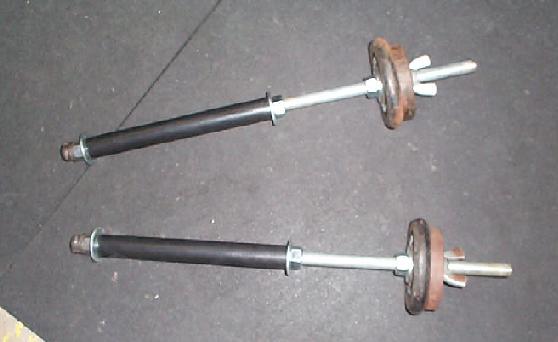Can I hear an Amen, brother?Stryke wrote:
wieght training and modern gyms have been totally influenced by the body building craze , the old time strongmen are much better examples IMHO , we should go back sometimes to go forward .
For years I've had to wade through the morass of books in the bookstore and literature in the periodicals, finding what I was looking for. Marcus is right. The vast majority of books on the bookshelves about weights and strength development were about bodybuilding. I know bodybuilding; I married a bodybuilding champion. What she does and what I do are like the difference between ballet and tap dancing.
Bodybuilding is about the show; weight training is about the go.
The other morass of books I've had to deal with is the tons of literature on weight loss and aerobics. Look - I'm happy if a soccer mom found a reason to go to the gym and now believes she won't look like Arnold. But that's not helping me any. Weight loss is going to happen for a weight trainer, but it's serendipity.
It is indeed about functional strength.Stryke wrote:
functional strentgh takes a whole lot more consideration .
The plyometrics movement was the first craze in the popular literature to get at what we athletes and martial artists are looking for. It's about functional power development. Maybe you impress the chicks (or the dudes
With the club bells and kettle bells, it's all about the movement and how to keep the momentum going from functional posture to functional posture. Yes, that requires strength. Yes, you will build muscle. Yes, Scott can pose with his shirt off and sell a few club bells.
But again, that's serendipity.
It's about taking the muscle and neuromuscular development into the field with you. It's cutting to the chase rather than going around your elbow to get from your thumb to your pinkie.
Just to illustrate...
This is a bodybuilder. (Can you say steroids?)

This is a world class athlete. All five foot seven of him is likely to win the American League Most Valuable Player award in 2008.

Dustin Pedroia is leading Major League Baseball in hits, is second in runs scored, and is third in stolen bases (not bad for a white guy...

That's bringing it to the playing field
- Bill








